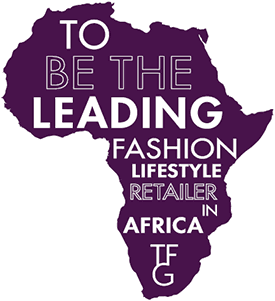FW
The Trading Corporation of Pakistan (TCP) failed to attract textile mills or traders for cotton procurement as its sixth cotton tender did not fetch a single bid. Textile mills were reluctant to procure cotton from the state-run grain trader and there was no participation in the consecutive second tender announced by TCP to offload cotton stocks procured from the domestic market to facilitate farmers.
The Federal Board of Revenue imposed a 10 per cent advance tax on cotton procurement from TCP due to which textile mills and traders are reluctant to procure cotton from TCP. As per the tender condition, successful bidders are required to pay an advance tax at the rate of 10 per cent, which will be later adjusted in their annual tax returns.
TCP issued the sixth cotton tender on September 18, 2015, for the sale of 84,600 cotton bales and accordingly the tender was opened on September 30, 2015, at the corporation's head office. In response to TCP's sixth cotton tender not a single buyer or textile mill or trader participated in the tender.
In order to stabilise cotton prices in the domestic market, the federal government, in November last year, asked TCP to procure cotton from ginning factories to facilitate farmers. Accordingly TCP procured 96,000 cotton bales from ginners.
Finer micron wools are playing a pivotal role in women’s wear as consumers are seeking more environmentally acceptable solutions each season. Women are seeking sustainable solutions to both formal and informal dressing. The worsted wool industry lost considerable business in the 1980s when tailored women’s wear opted for synthetic fibers. However, runways, catwalks and fashion commentators in Paris, Milan, London and New York are witnessing strong evidence of wool’s rapid autumnal return to quality women’s wear.
Wool lost its market to women’s wear some 30 years ago. Initially, the woolen look was dismissed as chunky, tweedy and coarse. But now the woolen look is seen as easily lending itself to the trend for layering with sweaters, stoles, scarves and capes . A more refined tailored look is now a key trend for this autumn and drape is an essential element in the new look.
Several leading couture houses in Paris are sampling fine worsted qualities traditionally associated with men’s wear for their women’s wear collections. With the ongoing global uncertainty, it is impossible to predict the future direction of the wool market, but in recent months it has held up well, in part due to solid demand.
Textile and apparel imports under the Caribbean Basin Economic Recovery Act (CBERA) and under the HOPE and HELP Acts increased last year, according to the 22nd report titled 'Caribbean Basin Economic Recovery Act: Impact on US Industries and Consumers and on Beneficiary Countries', released by the United States International Trade Commission (USITC).
The value of US imports of textiles and apparel entering under CBERA trade preferences rose 12.7 per cent over the 2013 level to $389.8 million in 2014. Haiti was the leading CBERA supplier of US textile and apparel imports in 2014, accounting for over 90 per cent of such imports, the report said.
From 2013 to 2014, US imports of textiles and apparel from Haiti rose 10 per cent to $843.2 million, with virtually all US imports of apparel from Haiti entering free of duty under trade preference programmes. In 2014, US imports of apparel from Haiti under the HOPE/HELP Acts surpassed those under CBERA and accounted for over half of total US apparel imports that entered free of duty into the United States.
However, the overall effect of CBERA exclusive imports on the US economy generally and on US industries and consumers continued to be negligible in 2014. On the other hand, US industries supplying garment pieces, yarn, and fabric to CBERA apparel producers benefit from enhancements to CBERA, such as the Caribbean Basin Trade Partnership Act.
“Investment rose significantly in Haiti's export-oriented apparel sector, but Haiti is—and will likely remain—a small US apparel supplier compared to globally competitive producers in Central America and Asia,” the report said.
www.cbp.gov
Bangladesh is yet to bring subcontracting garment factories under a regulatory framework. These units violate the requirement for minimum wages and are not members of any recognised association. Out of 3,500 factories, about 800 are subcontracting units. Most of them are small and medium enterprises, doing subcontracting jobs for big factories. They remain outside the purview of the fire, electrical and structural safety assessment of Accord and Alliance. They do not follow the government’s wage structure, and their rates are only four and three per cent those of approved factories.
Maternity leave and allowances are not paid in 26 per cent of these non-member units. The performance of the non-member factories in terms of safety and other compliance issues as well as payment of wage and overtime bills is poor.
To complicate matters many of these units do subcontracting jobs for big factories, which are members of recognised associations like the Bangladesh Garment Manufacturers and Exporters Association (BGMEA) or the Bangladesh Knitwear Manufacturers and Exporters Association (BKMEA).
The government is working to bring discipline to these subcontracting industries and finalising a policy. First of all, units that do subcontracting have to be documented. They have to be induced to get themselves registered with apparel apex bodies.
Next month’s ITMA, perhaps the most important international showcase for textile and garment manufacturing technologies, will witness a line-up by Busi Giovanni, the leading Italian socks knitting machines producer. Michele Castagna, Export & Marketing Manager, Busi said that the brand is set to display its brand new MEDICAL PANTYHOSE 4.5", which boasts unique technical features and knitting performance for today’s medical-hosiery industry.
Twin Layer, Busi’s new model had recently bagged the European patent due to its unique technology. This model is a high production single cylinder sock machine with latch needles in the dial that enable it to produce technical sports socks with twin fabric. Besides, early last month the family owned company also announced the launch of two new medical hosiery knitting machines for large sized medical hosiery.
Busi’s aim of completing their range of models solely devoted to knitting class 1, 2 and 3 certified medical socks has prompted the company to launch the new MEDICAL PANTYHOSE (needle counts from 226 to 366) and MEDICAL TERRY PANTYHOSE (needle counts from 226 to 280) machines. Both these are available in a 4.5" diameter, enabling the production of large socks and pantyhose, said Castagna.
India’s cotton production is expected to drop in the next season starting October 1 on account of deficient rains. Lower output may drive up domestic cotton prices in 2015-16 and further dent exports, as local prices are already ruling above global levels. India’s output could touch 37.7 million bales for 2015-16 compared with 38.3 million bales in the current marketing year.
The cotton crop has been affected by deficient rains, which dropped 14 per cent from the benchmark long-period average so far this year. While Gujarat and Karnataka could witness smaller harvests in 2015-16 than a year before, drought-hit Maharashtra is projected to have a bigger harvest next year than in 2014-15.
While cotton imports are projected to remain unchanged, exports are expected to suffer in view of a slowdown in its largest buyer, China. China, which usually accounts for over 70 per cent of India’s cotton exports, has cut down on purchases in a bog way. Even the depreciation of the rupee against the dollar isn’t going to help Indian textile exporters much, as the recent yuan devaluation by China has made its imports more expensive. Cotton consumption within India is forecast to rise 3.2 per cent from a year earlier.
Pakistan’s total textile exports for August were up by 11 per cent year-on-year. All major segments (except yarn) reported higher volumetric and dollar sales over August 2014. Most textile segments reported a decline in terms of both volume and value.
Cotton yarn and knitwear exports showed improvement by 10 per cent and 19 per cent year-on-year in terms of volume respectively. One segment with a volumetric increase for the eight months of 2015 is yarn. Yarn exports were higher in volume by 13 per cent year-on-year but due to depressed international prices export earnings were down by 8 per cent. Knitwear had a 17 per cent increase in volume but a paltry one per cent improvement in value. Other than that, the remaining textile items witnessed a decline in volume.
Competition from India, Turkey, and Bangladesh continues to take its toll on the industry. Exporters have to compete with lower prices. Readymade garments have been the star of the show. For the eight months ended 2015, readymade garment exports increased in value by 12 per cent year-on-year despite lower volume sales. This is because readymade garments - and the value-added segment in general - offer superior margins and are more price-inelastic relatively to their non-value added counterparts.

Global fashion biggies enter South Africa

The majority of clothing sold in South Africa by domestic apparel retailers such as The Foschini Group (TFG), Truworths, Mr Price and Edcon is still sourced from Asia. However, competition from international brands such as Zara and H&M is growing, as they expand in a sector whose value rose to more than 200 billion rand ($15 billion) at the end of 2014 from 8 billion in 2001.
One among the continent’s most brand-conscious consumers, South African households spent an average of 5.3 per cent, or 582 rand, of monthly income on clothing and footwear in 2014 says the Bureau for Market Research at the University of South Africa. Keeping an eye on rising consumer interest in fashion Zara opened its first store in South Africa four years ago. The brand, now operates six stores. Australian chain Cotton On has also called the country its fastest growing market while Britain’s Topshop and Forever 21 have also ventured into the market recently.
H&M is set to launch a big 50,000 sq. ft. store in Cape Town’s trendy V&A Waterfront mall next month. The Swedish retailer plans to open another one in Johannesburg this November. While Inditex following its fast fashion approach replenishes store shelves with new garment styles twice a week sourced from suppliers in Portugal, Turkey and Spain, H&M, which sources most of its requirements from Asian unites, is expected to follow the suit.
Domestic RMG follow ‘fast fashion’ route
To compete with these global names and safeguard their market share, South African retailers such as the Foschini Group plan to closely work with local suppliers to bridge the gap between production and retail. About 65 per cent of its women’s wear is now made in South Africa.
Some South African factories are trying to get fresh garments into stores within 32 days or a maximum cut-off target of 42 days, which obviously is still slower than fast fashion giants like Zara. South Africa has about 900 clothing factories, just over half an estimated 1,600 plants at the sector’s peak in 1996, according to data from the clothing manufacturing industry bargaining council.
From 2010 to 2014, productivity jumped 36 per cent while employment in the clothing, textile, footwear and leather industry rose to 88,657 in the year to March 2015 from 87,386 a year earlier, still much lower than the 1996 peak of 228,000 jobs, before Chinese imports started making a negative impact by dumping cheap garments in the local market.
With manufacturing costs continuously increasing in China and across Asia, importing nations are exploring new apparel sourcing destination. Many companies are diverting their sourcing needs to new countries and African continent is emerging as the answer to their quest.
Italy’s textile industry revenues for 2015 are expected to close five per cent higher than the prior year. The expectation is based on a forecast of the euro exchange rate in line with the current trend. There is also an expected 6.5 per cent increase in revenues for the first half of 2016.
Significant investments are slated for the promotion of Italian-made fashion and textile products. There is finally a clear sign of recovery following many difficult years of economic struggle for the industry. The Italian textile and fashion industries went up 2.7 per cent in 2014 over the year before. Italy holds the unquestionable supremacy of the textile market worldwide. Italian textiles and fabrics are famous all over the world for their high quality obtained through innovative machinery, techniques and processes that lead to the introduction of new fashion fabrics and textiles.
During the last few years the industry has moved out of basic textile product segments and into end products. The Italy’s textile industry has a global market share of seven per cent and is the second major producer behind China. Italy is also a pioneer in the premium market segment. The country has been a pioneer in exporting yarns and woolen fabrics.
Vietnam is emerging as a potential destination for foreign investors as China is scaling down its domestic production for export due to increasing labour and land costs. Tran Bac Ha, Chairman, Bank for the Investment and Development of Vietnam (BIDV) during a workshop said that Vietnamese enterprises though, would have to restructure if they wish to compete and integrate effectively. BIDV has committed to offer $2 billion to garment firms over the next five years. This will be channelled into material area development, trade promotion and market expansion.
According to Phan Chi Dung, Director of the Light Industry Department under the Ministry of Industry and Trade, Vietnam will gain deeper access to the world’s large economies by joining bilateral and multi-lateral free trade agreements (FTAs). Besides, due to this, the country will be able to penetrate deeper in its main markets of garments, such as the European Union, the US, Japan and Korea. He underscored tariff eliminations that would result from FTAs as an expected boost for Vietnamese exports.
Do Hai Thang, Industry and Trade Deputy Minister, says that garment-textile is among those sectors that will most benefit from FTAs once in effect. However, there major challenges for the sector, along with opportunities. These include origin specifications and regulations issued by import countries. Besides, he added that that capital mobilisation is also challenging the garment and textile businesses; most of them are small- and medium-sized ones.












